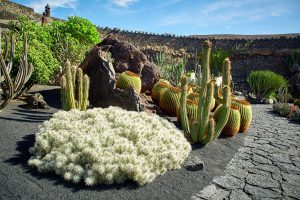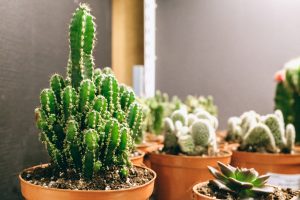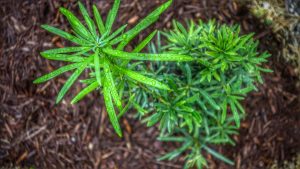Prickly Pear Cactus Care

The prickly pear cactus (Opuntia spp.) is a desert superstar—perfect for Arizona landscapes due to its heat tolerance, low water needs, edible pads and fruit, and bold desert beauty. Here’s everything you need to know to grow and care for it:
🌵 Why Prickly Pear Is Ideal for Arizona
-
Native to the Southwest U.S. and Mexico
-
Tolerates extreme heat (100°F+) and drought
-
Thrives in full sun and poor soils
-
Produces beautiful flowers and edible fruit (called “tunas”)
-
Attracts pollinators, including bees and hummingbirds
📅 Best Time to Plant in Arizona
-
March to May or September to early October
-
Avoid planting during the hottest part of summer
🌞 Sun & Soil Requirements
-
Needs full sun (at least 6–8 hours/day)
-
Grows best in well-draining soil
-
Sandy, rocky, or native desert soil preferred
-
-
Avoid heavy clay unless amended with sand or pumice
💧 Watering Needs
-
New planting: Water every 2 weeks for the first 1–2 months
-
Established cactus: Water once a month or less during extreme drought
-
Overwatering is the #1 killer—let soil dry completely
✂️ Pruning & Maintenance
-
Prune in late spring or early summer if shaping is needed
-
Wear thick gloves—even “spineless” varieties have tiny glochids
-
Remove dead pads, broken sections, or pads touching the ground
🍎 Edibility & Uses
-
Pads (Nopales): Edible when young (harvest with gloves, remove spines)
-
Fruit (Tunas): Ripens late summer; deep red or purple when ready
-
Used in jams, jellies, juices, candy, syrup
-
-
Be cautious of tiny glochids on fruit—burn or scrape them off
🐜 Pest & Disease Issues
-
Generally low-maintenance, but can experience:
-
Cochineal scale (white fuzzy patches) – rinse with water or treat with neem oil
-
Root rot from excessive watering
-
Rodents or javelinas nibbling pads
-
🌸 Popular Varieties for Arizona
| Variety | Features |
|---|---|
| Santa Rita | Purple pads in cold/winter; ornamental |
| Beavertail | Spineless, pink flowers |
| Indian Fig | Edible pads, large red fruits |
| Engelmann’s | Native to Arizona, orange/yellow blooms |
🛠️ Planting Tips
-
Plant 1–2 feet apart (depends on variety)
-
Use tongs or newspaper to handle pads safely
-
Don’t water for the first 7 days after planting → helps avoid rot
-
No fertilizer needed—but can add cactus fertilizer in spring if growth is slow
Planting Guide
Here’s a step-by-step planting guide for prickly pear cactus (Opuntia spp.), tailored for Arizona’s low desert climate:
🌵 Step-by-Step Guide to Planting Prickly Pear Cactus in Arizona
🛒 1. Choose Your Plant or Pad
-
You can plant:
-
🌿 A rooted prickly pear cactus in a nursery pot
-
🌿 A single pad (cladode) from an existing cactus
-
-
Choose a healthy, unblemished pad that is firm and at least 6 months old
🔪 If cutting a pad yourself, let it dry and callous for 7–10 days before planting to prevent rot.
🕐 2. Best Planting Time
-
Plant in spring (March–May) or early fall (September–October)
-
Avoid mid-summer or frost-season planting
🏜️ 3. Pick the Right Spot
-
Full sun—6–8+ hours/day
-
Well-drained soil (sandy, gravelly, or decomposed granite)
-
Avoid areas that collect rainwater or stay soggy
4. Prepare the Soil
-
If soil is heavy clay:
-
Amend with sand, pumice, or perlite
-
Or plant on a sloped mound to improve drainage
-
-
Dig a hole:
-
For rooted plants: just deep enough to cover the root ball
-
For pads: 2–3 inches deep to bury the base of the pad
-
🧤 5. Handling Cactus Safely
-
Use:
-
Tongs
-
Thick leather gloves
-
Folded newspaper or cardboard
-
-
Be cautious of glochids—tiny barbed hairs on some varieties
🌱 6. Planting the Pad or Rooted Cactus
-
Pad planting:
-
Place pad upright, bury base 2–3 inches deep
-
Support with rocks or stakes until roots form (about 4–6 weeks)
-
-
Rooted plant:
-
Gently loosen roots
-
Place in hole and backfill lightly
-
❌ Do not water immediately after planting. Wait 7–10 days to let it settle and reduce rot risk.
💧 7. Watering Schedule
-
After 7–10 days: Water lightly once every 2 weeks until established (about 2 months)
-
Once established:
-
Water only during extended drought
-
Usually once per month or less in summer
-
None needed during cooler months unless unusually dry
-
🌸 8. Mulch (Optional)
-
Use gravel mulch around the base to retain heat and reduce weeds
-
Keep mulch 2–4 inches away from the base of the pad
✂️ 9. Maintenance Tips
-
Prune only to shape or remove damaged pads
-
Monitor for cochineal scale (white fuzzy patches)—remove with a strong spray of water or neem oil
-
Fertilizer generally not needed but can use cactus fertilizer once a year in early spring
🛑 Common Mistakes to Avoid
-
❌ Overwatering (kills more cacti than drought!)
-
❌ Planting too deep or in soggy soil
-
❌ Handling without protection (gloves, tongs, etc.)
Prickly Pear Cactus For Sale
If you are interested in increasing the beauty of your landscape by buying desert plants, stop by our convenient location at 33840 N. Cave Creek Rd., in Cave Creek. For customers interested in our landscaping services, give us a call at (480) 488-9455 to schedule a visit to your home.
More Articles About Arizona Landscaping
- Tips For Growing Indoor Cactus
- Wood Chips Vs Mulch
- Desert Landscaping Ideas
- 10 Incredible Saguaro Cactus Facts
- Where To Buy Saguaro Cactus
- How To Save A Dying Cactus
- How To Bring A Dead Palm Tree Back To Life
- Landscaping Prices In Arizona
- Landscape Boulders Cost
- How To Take Care Of A Cactus In Arizona | Gardening Tips
- Desert Shrubs
- When are the Saguaro Cactus in Bloom in AZ?
- Mulch vs Compost | Differences
- Garden Soil Vs. Potting Mix | Differences
- What Type Of Water Fountain Should I Buy?
- What is Xeriscape?
- The Benefits of Ground Covering Plants
- Desert Plants
- Common Desert Plants Found in Arizona
- Garden Water Fountains
- Types of Cactus
- Different Types of Water Fountains for Your Garden
- Desert Landscaping Phoenix
- Sonoran Desert Landscape Rocks
- Arizona Xeriscape Gardening







